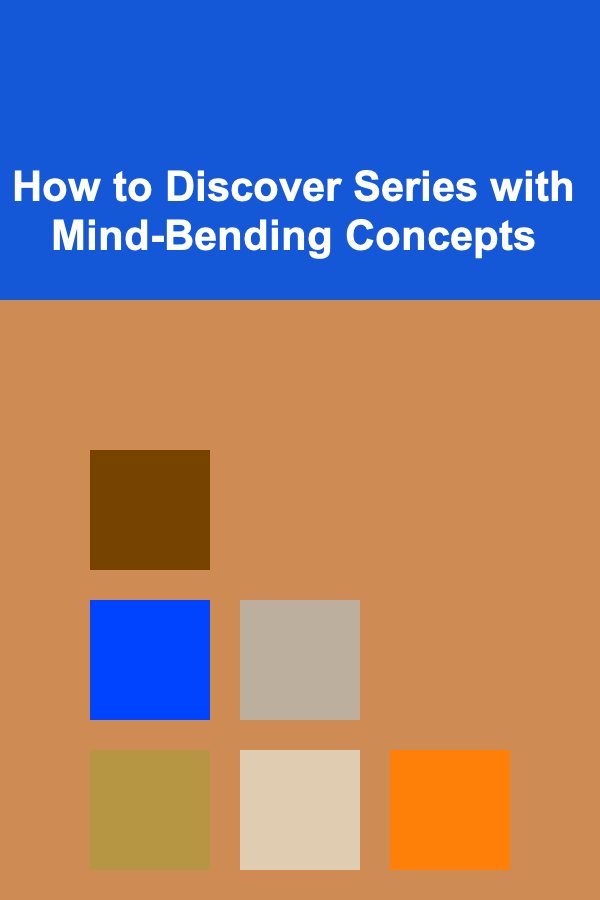
How to Practice Guided Imagery Meditation
ebook include PDF & Audio bundle (Micro Guide)
$12.99$8.99
Limited Time Offer! Order within the next:

Meditation is a powerful tool for achieving mental clarity, emotional stability, and overall well-being. Among the many types of meditation practices, guided imagery meditation stands out as one of the most accessible and versatile methods. It is especially effective for individuals who are new to meditation or have difficulty focusing during traditional mindfulness practices. Guided imagery meditation invites the practitioner to mentally immerse themselves in vivid images or scenarios, facilitating relaxation, reducing stress, and enhancing creativity. In this article, we will explore the fundamentals of guided imagery meditation, its benefits, and a step-by-step guide on how to practice it effectively.
What is Guided Imagery Meditation?
Guided imagery meditation is a type of meditation where a practitioner listens to a facilitator or guide (either live or through a recording) who helps them visualize peaceful, calming, or therapeutic scenarios. These scenarios often involve natural landscapes, peaceful settings, or symbolic imagery. The goal is to help the practitioner connect with their senses, reduce stress, and enter a deeply relaxed state.
The practice works by leveraging the mind's ability to create vivid mental pictures and activate the body's relaxation response. Through guided imagery, the mind and body are encouraged to relax and experience healing or emotional release.
Guided imagery can be used for a variety of purposes:
- Stress Reduction: The technique helps calm the mind, lower heart rates, and reduce the effects of stress.
- Pain Management: By visualizing healing or comfort, it can act as a tool for managing chronic pain or discomfort.
- Emotional Healing: Guided imagery can help process past trauma or negative emotions by creating new, healing mental images.
- Enhancing Creativity: It helps stimulate the imagination by encouraging visualization of new ideas and solutions.
- Sleep Aid: Imagery that invokes relaxation can improve sleep quality and help combat insomnia.
The Science Behind Guided Imagery Meditation
The effectiveness of guided imagery is not purely anecdotal; there is solid scientific research supporting its benefits. Neuroscience has shown that the brain cannot always distinguish between real experiences and vividly imagined ones. This concept is known as "neural plasticity," which means that the brain can rewire itself based on the mental and emotional input it receives. When a person visualizes a peaceful scene, the brain activates similar regions that would be engaged if they were actually in that environment.
Additionally, guided imagery engages multiple senses: sight, sound, touch, and sometimes even taste or smell. This multisensory involvement helps ground the individual in the present moment, bringing them into a state of mindfulness.
Research has also demonstrated that guided imagery can have a measurable effect on physiological processes. Studies have found that it can lower blood pressure, reduce anxiety, and even improve immune function. It can also stimulate the relaxation response, reducing stress hormones like cortisol and enhancing the production of endorphins, the body's natural pain relievers.
Benefits of Guided Imagery Meditation
Guided imagery meditation offers numerous benefits, both psychological and physical. Here are some of the most notable advantages:
1. Stress Reduction
Stress is a natural response to challenging situations, but chronic stress can have negative consequences on mental and physical health. Guided imagery meditation helps reduce stress by enabling the mind to shift its focus from stressors to peaceful, calming imagery. It activates the parasympathetic nervous system, which is responsible for the body's relaxation response, lowering heart rate and blood pressure.
2. Improved Emotional Health
Practicing guided imagery can help individuals process and release negative emotions. For example, someone who has experienced trauma might visualize a safe space or a situation where they feel empowered, which can aid in healing emotional wounds. The practice promotes emotional balance by encouraging positive mental states such as peace, self-compassion, and resilience.
3. Enhanced Focus and Concentration
The act of focusing on guided imagery helps train the brain to concentrate and clear away distractions. With regular practice, individuals often find it easier to focus on tasks in their everyday life. As the practice encourages mindfulness, it can improve cognitive function and support clearer decision-making.
4. Pain Relief
Guided imagery can also help alleviate chronic pain or discomfort. By imagining themselves in a relaxing and soothing environment, practitioners can reduce the intensity of physical pain. This method is often used as a complementary treatment for those suffering from conditions such as arthritis or fibromyalgia.
5. Better Sleep
One of the most immediate and noticeable benefits of guided imagery meditation is improved sleep quality. By guiding the mind to visualize calming, serene images, it allows the body to release tension, making it easier to fall asleep and enjoy restful sleep.
6. Increased Creativity
Guided imagery fosters creative thinking by encouraging the visualization of novel and imaginative concepts. It helps the brain tap into its innate creativity, which can be particularly useful for problem-solving, artistic endeavors, or innovation in the workplace.
7. Promotes Physical Healing
There is evidence suggesting that guided imagery can enhance physical healing. Visualizing the body's immune system at work, for example, can increase its ability to fight illness or speed up recovery from surgery or injury.
How to Practice Guided Imagery Meditation
Now that we have a deeper understanding of what guided imagery meditation is and its benefits, let's explore how to practice it effectively.
Step 1: Find a Quiet Space
To practice guided imagery meditation, begin by finding a quiet and comfortable space where you won't be interrupted. This can be a room in your house, a quiet park bench, or even a comfortable chair by a window. The key is to choose a place that helps you feel safe and relaxed.
Step 2: Get Comfortable
Once you've found your space, sit or lie down in a comfortable position. You may want to close your eyes, but this is not mandatory. The goal is to allow your body to relax as much as possible. Adjust your posture so that you feel at ease, whether you are sitting with your legs crossed or lying flat on your back.
Step 3: Focus on Your Breath
Begin by focusing on your breath. Take deep, slow breaths, inhaling deeply through your nose and exhaling through your mouth. As you breathe, allow your body to relax further. If your mind starts to wander, gently guide your attention back to your breath. This practice of deep breathing helps activate the body's relaxation response.
Step 4: Begin the Guided Imagery
At this point, you can begin the guided imagery process. There are two primary ways to practice this:
- Listening to a Guide: Many people prefer to listen to a guided meditation recording, which typically involves a narrator leading them through a visualization. These recordings can be found on meditation apps, YouTube, or websites dedicated to mindfulness.
- Self-Guided Visualization: If you prefer to meditate on your own, you can create your own imagery. Close your eyes and imagine a peaceful place. This could be a beach, a forest, a mountaintop, or any place that brings you peace. Imagine the colors, smells, sounds, and textures of this place. Visualize yourself experiencing it with all of your senses, feeling fully immersed in the environment.
Step 5: Engage Your Senses
The more vivid and sensory-rich your imagery, the more effective the meditation will be. Engage all of your senses during the visualization. For example, if you are imagining walking through a forest, try to hear the rustling of the leaves, feel the cool breeze on your skin, and smell the earthy scent of the trees. The more detailed the imagery, the more real and relaxing the experience will be.
Step 6: Let Go of Control
As you immerse yourself in the imagery, allow your mind to relax and let go of control. Let the guided imagery take you on a journey without trying to force or control the images. Trust the process and allow yourself to experience whatever comes up, whether it's a place, a feeling, or even a memory. This process of surrender is key to unlocking the full potential of the practice.
Step 7: Gently Return to the Present
After spending some time in the guided imagery, gently bring yourself back to the present moment. You can do this by slowly becoming aware of your surroundings, taking a few deep breaths, and noticing the sensations in your body. When you're ready, open your eyes and reflect on the experience. Take a moment to appreciate the relaxation and clarity that you've cultivated during the meditation.
Step 8: Practice Regularly
Like any meditation practice, guided imagery becomes more effective with regular practice. Start with shorter sessions, perhaps 10-15 minutes, and gradually work up to longer sessions as you become more comfortable. With time, you'll likely notice that the practice helps reduce stress, improve your emotional well-being, and promote a sense of inner peace.
Conclusion
Guided imagery meditation is a powerful tool that offers a multitude of benefits for the mind, body, and spirit. By engaging your senses and immersing yourself in calming, peaceful images, you can achieve deep relaxation, emotional healing, pain relief, and even improved creativity. Whether you're using it to manage stress, promote healing, or simply enhance your mental well-being, guided imagery meditation can become a transformative part of your wellness routine.
Through the practice of guided imagery, you can learn to quiet the mind, let go of stress, and connect with your inner self. With consistency and patience, you'll discover that this simple yet profound meditation technique can lead to a life of greater peace, balance, and joy.

How to Create a Family Movie Night on a Budget
Read More
How to Use Drawer Organizers for Smaller Items
Read More
How to Reinvest Profits for Growth
Read More
How to Explore Paris Like a Local
Read More
How to Discover Series with Mind-Bending Concepts
Read More
How to Review Romantic Comedies for Charm: Beyond the Meet-Cute
Read MoreOther Products

How to Create a Family Movie Night on a Budget
Read More
How to Use Drawer Organizers for Smaller Items
Read More
How to Reinvest Profits for Growth
Read More
How to Explore Paris Like a Local
Read More
How to Discover Series with Mind-Bending Concepts
Read More